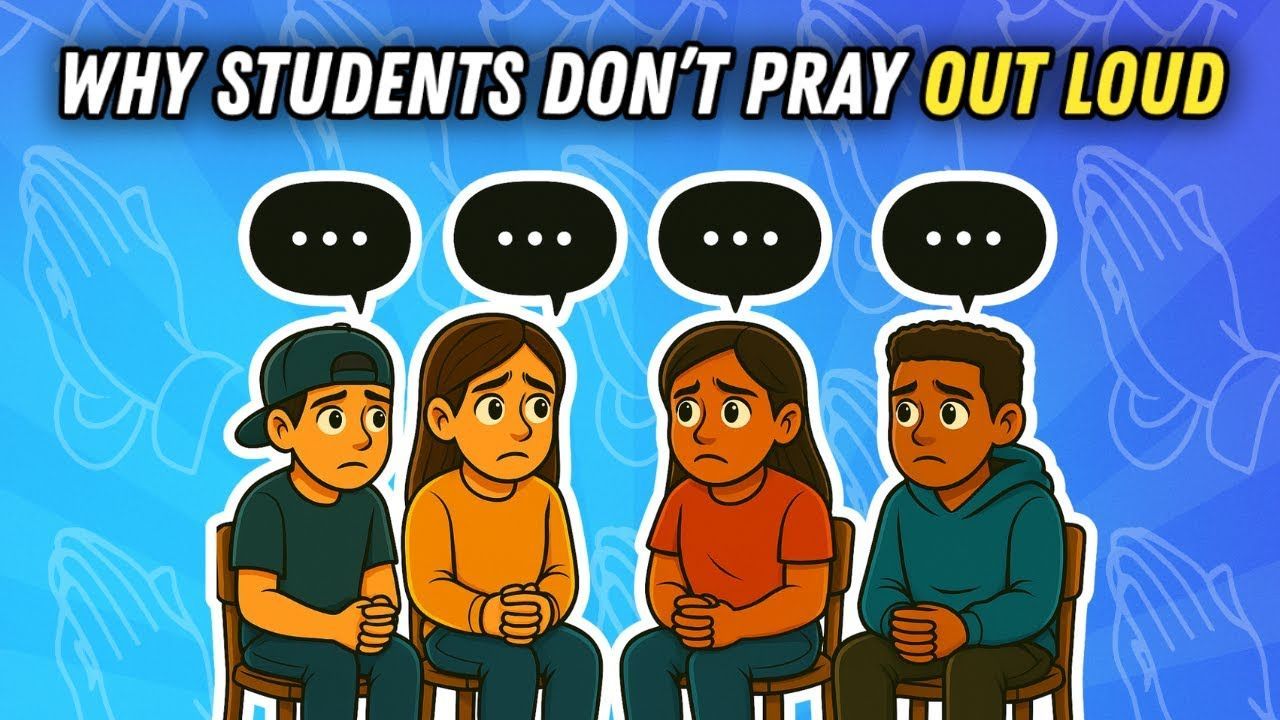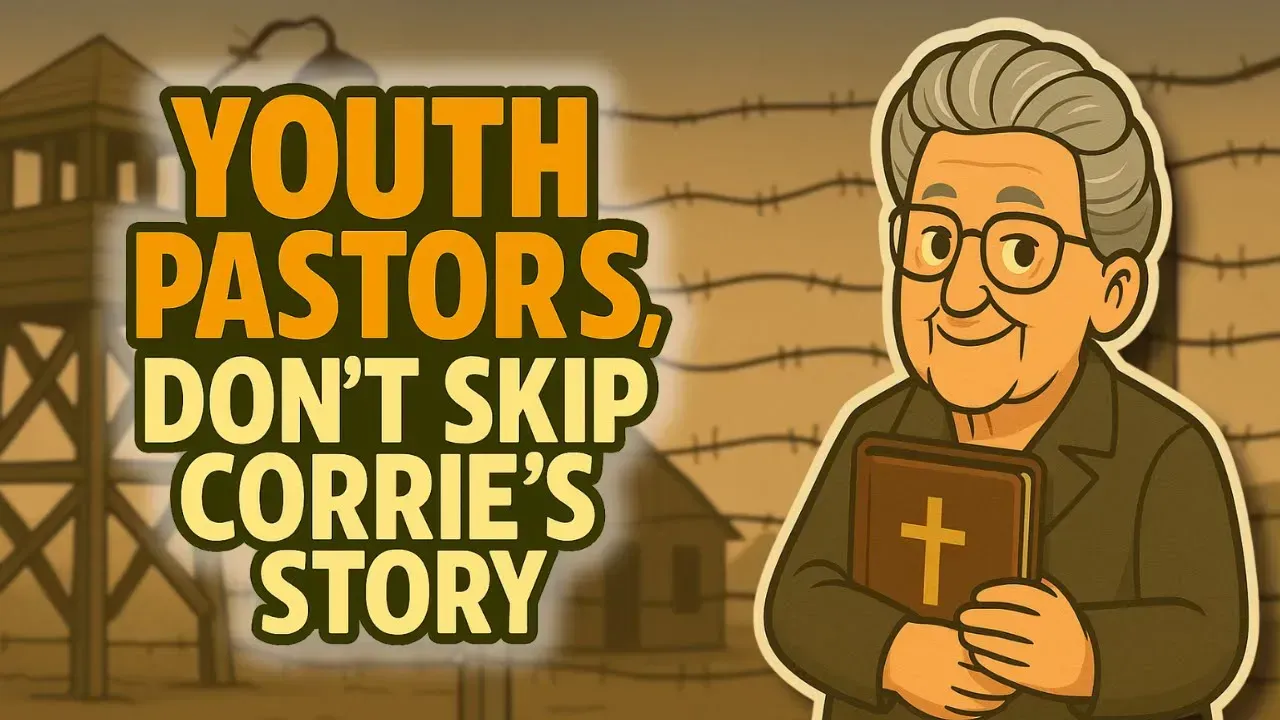The Data Behind the SHOCKING Rise in Bible Reading!
Millennials, Gen Z, and the Bible: Why Young Adults Are Fueling a Scripture Comeback
After years of hand-wringing about biblical illiteracy and spiritual apathy, there’s surprising news: Bible reading in the U.S. is surging — and it’s being driven by Millennials and Gen Z.
According to new Barna research released November 6, 2025, weekly Bible reading among U.S. adults has jumped from 30% in 2024 to 42% in 2025. Among self-identified Christians, that number climbs to 50%, the highest it’s been in over a decade.
Ryne and Keith from Beyond the Youth Room unpacked this data and what it means for youth leaders on the front lines of discipling the next generation.
A Once-in-25-Years Jump
Barna has been tracking Bible engagement for 25 years. In all that time, 2024 was the low point: only 30% of adults reported reading the Bible weekly.
Then, suddenly, in 2025, that number spiked 12 points to 42%.
That’s not normal fluctuation. That’s a step-change.
Among Christians, weekly Bible reading rose from 39% to 50% in a single year. Bible sales are also up significantly, confirming what the data suggests: people are not just owning Bibles — they’re opening them.
No one can say for sure why. Global instability, wars, cultural confusion, political tension, and high-profile Christian voices may all be contributing. But whatever the combination, spiritual curiosity is rising, not shrinking.
Young Adults Are Leading the Charge
One of Barna’s most striking observations: Bible engagement is falling among older generations but rising fast among younger ones.
- Boomers & Gen X have generally declined over the last two decades in weekly Bible reading, with only a modest rebound from 2024 to 2025.
- Millennials jumped from 34% (2024) to 50% (2025).
- Gen Z adults (those who’ve already graduated out of youth ministry) leapt from 30% (2024) to 49% (2025), a staggering 19-point increase in one year.
Barna’s broader “State of the Church” work has already shown that young adults are increasingly returning to church and expressing commitment to Jesus. This new report suggests Bible reading is following that same trajectory.
In other words:
The generations many churches had written off as “disengaged” might actually be the ones
most eager to encounter God’s Word.
The Surprise Twist: Young Men Outpacing Young Women
Historically, women have been more religiously active than men, including in Bible reading. For the last 25 years, that’s been the norm.
But the 2025 data tells a new story:
Younger men are now reading the Bible more frequently than younger women.
Among Gen Z, for example:
- Gen Z men reading weekly: 54%
- Gen Z women reading weekly: 46%
A few years ago, Barna saw an even wider gap, with Gen Z males far ahead. That’s beginning to even out, but the trend holds: young men are unusually engaged with Scripture right now.
Ryne and Keith offered some possible factors:
- College admissions are increasingly female, while more young men are opting out of traditional college and staying local. That may leave them more open to church community and spiritual searching.
- Cultural issues like gender identity, fairness in sports, and social debates may be pushing some young men to seek solid ground in faith and Scripture.
- Churches may be waking up to the need to intentionally call men into mission, leadership, and responsibility rather than assuming they’ll sit quietly on the sidelines.
Whatever the reasons, this is uncharted territory in modern American church life — and it’s an enormous opportunity.
Engagement Is Up… But Conviction Is Lagging
Here’s the tension:
More people are reading the Bible, but fewer strongly affirm that it’s totally accurate.
Barna’s data shows:
- In 2000, 43% of U.S. adults strongly agreed that the Bible is totally accurate in the principles it teaches.
- In recent years, that dropped below 40% and now sits at 36%.
- Among Christians, that conviction is only 44%.
So while Bible reading has surged by 12 points, strong belief in the Bible’s accuracy has only increased by 6 points.
Barna CEO David Kinnaman puts it this way:
“Engagement is outpacing conviction.”
People are opening Scripture, but many are still unsure what to do with it, what they believe about it, and whether it’s truly trustworthy.
For the church, that’s not a reason to panic. It’s a clear invitation to teach, equip, and disciple.
Five Ways the Church Should Respond
Ryne and Keith wrapped up with five key responses for youth pastors and church leaders who don’t want to miss this moment.
1. Praise Fervently
First and foremost:
this is God’s doing.
No human strategy can explain a once-in-25-years jump in Bible engagement.
Before we critique or analyze, we worship. Revival winds are blowing — and that’s not something we manufacture. It’s something we receive with gratitude.
2. Adapt Rapidly
Trends like this don’t last forever.
We need to adjust quickly:
- Teach why the Bible is historically reliable and theologically trustworthy.
- Help students understand inspiration, transmission, and preservation of Scripture.
- Address the big questions they’re actually asking, not just the ones we wish they had.
The gap between “I read the Bible” and “I trust the Bible” is a direct challenge to the church to step up its teaching and discipleship.
3. Welcome Warmly
Many new Bible readers and church attenders have little or no Christian background.
They might:
- Be in Genesis and totally confused
- Confuse “liking church” with saving faith
- Be hungry, but not yet clear on the gospel
This is not the time for insider language and assumptions. It’s the time to:
- Slow down
- Explain basics
- Celebrate progress
- Walk with people as they wrestle
We must be the kind of churches where someone can say, “I’ve only made it to Genesis,” and instead of getting shamed, they get cheered on and guided.
4. Disciple Deeply
If students are reading Scripture but unsure whether it’s accurate, shallow engagement won’t cut it.
We need to:
- Go beyond “favorite verses” and “feel-good passages”
- Equip them to think biblically about controversial cultural issues
- Introduce them to solid apologetics and credible scholars
- Give them tools to study, interpret, and apply the Bible for themselves
The good news?
There are more accessible, high-quality resources on biblical reliability, manuscript evidence, and theology than ever before — from books to YouTube to podcasts.
We don’t have to reinvent the wheel. We just have to intentionally put it in students’ hands.
5. Activate Urgently
For youth ministry, urgency is built-in: you only get a few years with each student.
Combine that with a once-in-a-generation spike in Bible reading, and the message is clear:
- Don’t assume you’ll “get to it later.”
- Train students now to share the gospel, lead Bible studies, and live on mission.
- Give them opportunities, not just information.
The question isn’t just, “Will this Bible surge last?”
The question is, “How many disciples will we make while it’s here?”
The Bottom Line
If you’re a youth pastor, parent, or church leader who’s been quietly grieving over decline, take heart:
- Young adults are returning to Scripture.
- Young men are stepping up in new ways.
- Spiritual curiosity is real and rising.
The harvest is plenty. The question is whether we will praise, adapt, welcome, disciple, and activate in time.
Now is not the time to coast.
Now is the time to
lean in.











